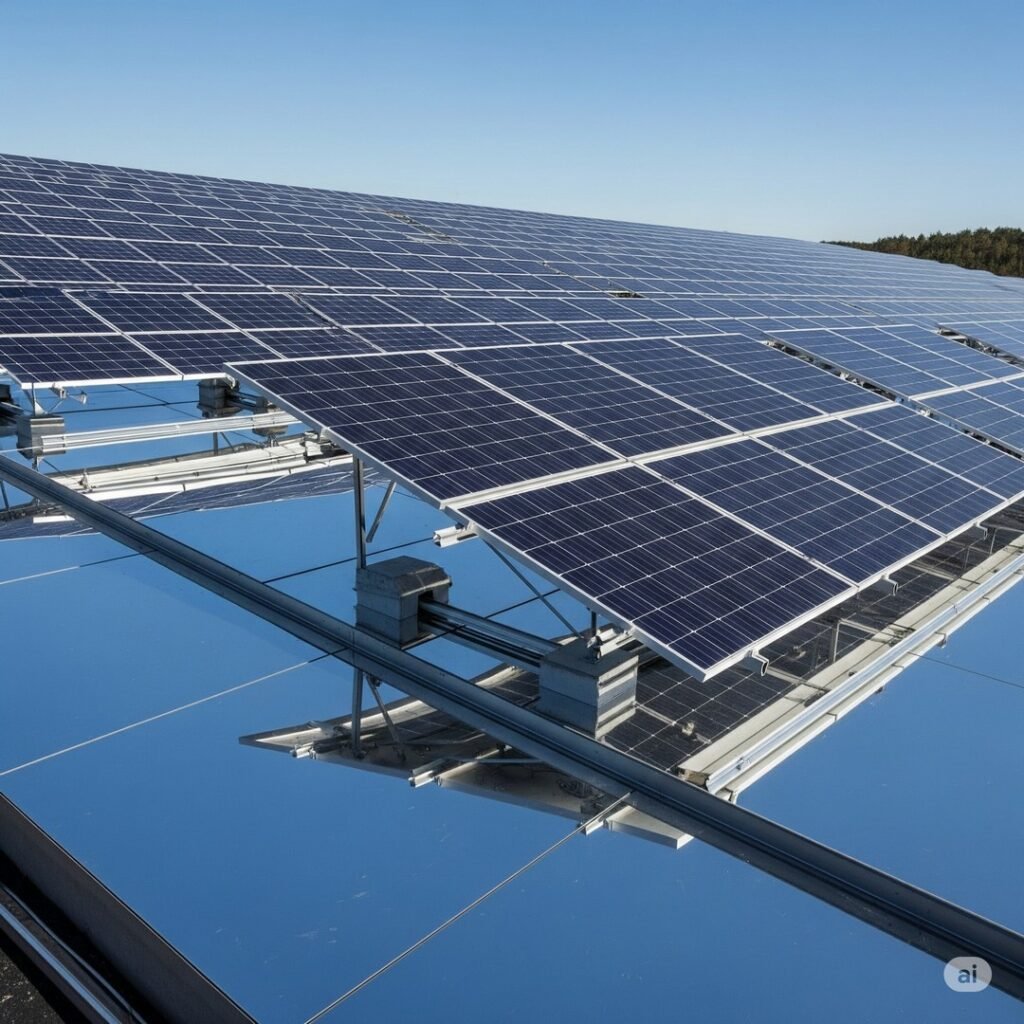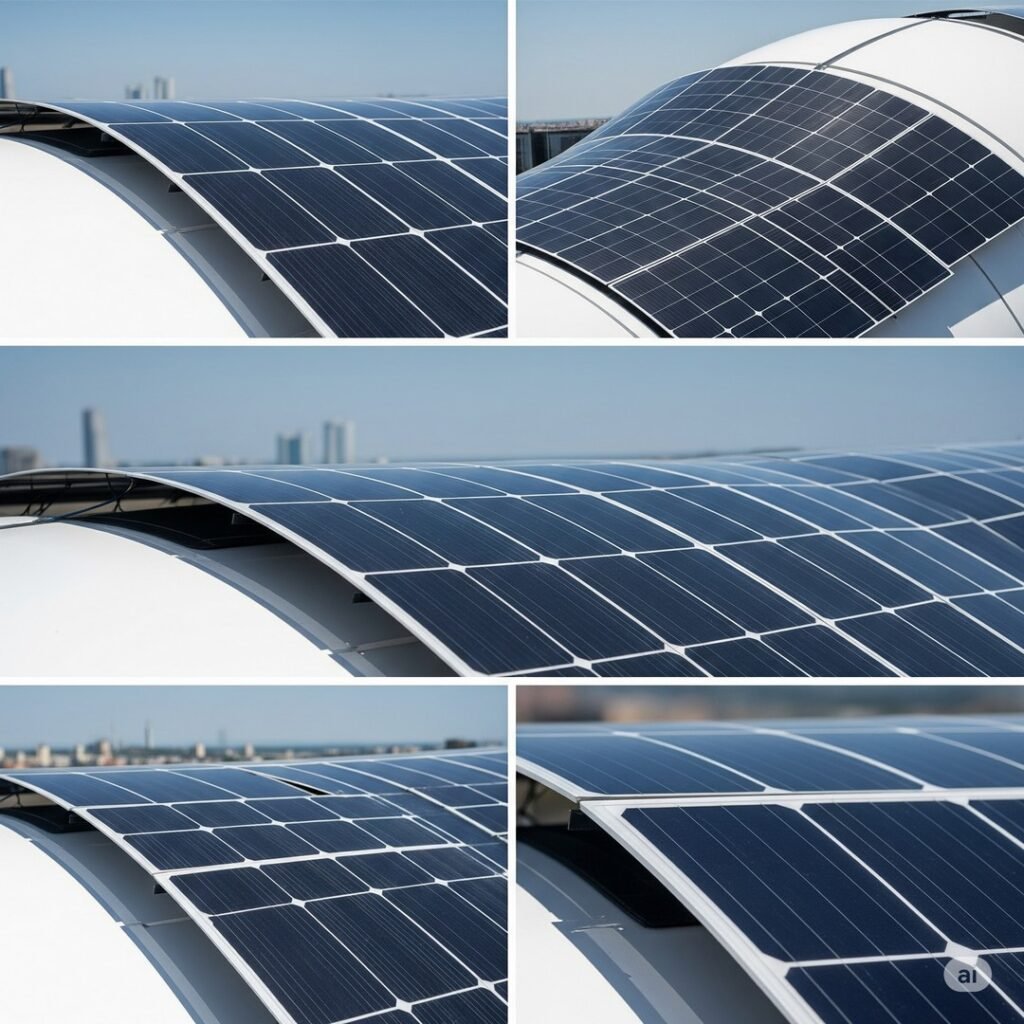The solar energy landscape is constantly evolving, with exciting new technologies emerging that promise to revolutionize how we harness the sun’s power. Let’s quickly explore some of the most groundbreaking innovations.

Boosting Efficiency with Tandem Power
Perovskite-Silicon Tandem Cells: These innovative cells layer perovskite onto traditional silicon, capturing a broader spectrum of sunlight. They’ve already exceeded 26% efficiency, significantly increasing energy output from the same area.

Double the Impact with Bifacial Design
Bifacial Solar Panels: Why capture sunlight from only one side? Bifacial panels absorb energy from both the front and back, leading to increased overall energy production. This makes them perfect for ground mounts, carports, and reflective surfaces.

Flexible and Lightweight Panels
Flexible and Lightweight Panels: Imagine solar power on curved surfaces or integrated into portable electronics! These ultra-light and flexible panels are opening up new possibilities for solar energy in previously inaccessible locations and applications.

Invisible Power: Solar That Blends In
Transparent Solar Technology: Soon, your windows could be generating electricity! Transparent solar panels are being developed for integration into building facades and windows, producing clean energy without obstructing natural light or compromising aesthetics.

Reaching for the Stars: Solar Power from Orbit
Text: Space-Based Solar Power: The ultimate vision? Giant solar arrays in orbit, assembled by robots, beaming clean energy down to Earth. Unaffected by weather or nighttime, this could provide a continuous and abundant power source for the future.
What this means for solar adoption in India?
The Indian solar sector is rapidly expanding, offering significant benefits to average householders. The country’s solar capacity surged to 72 GW in 2023. This growth is driven by supportive government policies, such as financial incentives, tax advantages, and subsidies, making solar energy more accessible and affordable for homeowners. Falling solar panel costs further contribute to this trend.
For the average householder, this means a growing opportunity to adopt solar energy for their homes, reducing their reliance on traditional electricity grids and potentially lowering their energy bills. The government’s ambitious goal of achieving 500 GW of renewable energy capacity by 2030, with 280 GW from solar power, indicates continued support and development in this sector, promising a more sustainable and economically viable energy future for households across India.
Disclaimer : information sourced from various technology websites. There may be errors, use the information at your discretion.






